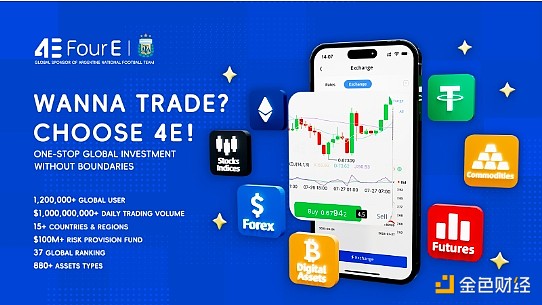The recent positive returns from the "Trump Trade" craze have reignited investors' enthusiasm. Faced with a wide range of investment options such as stocks, cryptocurrencies, and gold, investors need to strike a balance between potential returns and risks when making choices. Understanding the characteristics of different mainstream asset classes is the key to developing a suitable investment strategy.
Stocks:Buy a company's shares to share in the company's future profit growth. Stock prices fluctuate greatly and are easily affected by the company's business performance, market sentiment, and economic conditions. They are high-risk, high-return investment categories.
Index:Index measures the performance of a group of stocks over a period of time (such as the S&P 500 or CSI 300). Indices include many companies and can better reflect the overall performance of the market. Indices usually have relatively small fluctuations and are suitable for investors who seek long-term, stable returns.
Cryptocurrency:Cryptocurrency (such as Bitcoin and Ethereum) is a digital asset based on blockchain technology. Its price is highly dependent on market sentiment, technological innovation, and policy orientation, and is extremely volatile. It is suitable for investors with extremely high risk tolerance and the pursuit of super high returns.
Gold:Gold is a recognized safe-haven asset. Its value usually rises during economic instability. It has relatively low volatility and is the first choice for asset preservation, but the returns are relatively limited. It can be invested through physical gold, futures trading, etc.
Foreign Exchange:As the world's largest financial market, foreign exchange trading involves the buying and selling of currency pairs (such as the US dollar/euro), which is significantly affected by global economic policies and exchange rate fluctuations. Investors are required to have rich experience and strong risk tolerance
Commodities:It covers raw materials such as oil, natural gas, agricultural products and metals. The price is jointly affected by the supply and demand fundamentals, the macroeconomic situation and the geopolitical situation. It can be invested through the futures market or related funds, and the risk and volatility are relatively high.
ETF (Exchange Traded Fund):A fund product that tracks a specific index, industry or asset class, has the trading flexibility of stocks, and achieves risk diversification at the same time. It is suitable for investors who seek asset diversification and focus on liquidity.
Bonds:Lending money to the government or enterprises for a fixed interest return and a promise to repay the principal is considered a relatively safe investment channel, but the returns are relatively fixed and limited.
Funds:Managed by professional fund managers, they invest in a variety of assets such as stocks and bonds, and are suitable for investors who lack investment experience or want to achieve asset allocation. However, fund performance is affected by market fluctuations, and management fees will erode some of the returns.

Financial assets are rich and diverse, each with its own characteristics. This issue of "4E Seconds" hopes to help investors better choose according to their personal risk preferences and investment goals by understanding these mainstream asset classes. As a global partner of the Argentine national team, 4E provides a one-stop trading platform covering more than 600 assets including cryptocurrencies, US stocks, indices, foreign exchange, bulk gold, etc., and specially launched a novice simulation to help everyone get started easily. If you are interested in investment, you may wish to come to 4E to experience the convenience and security of professional trading.
4E Twitter official account: https://x.com/4echinese
4E Telegram group: https://t.me/Chineseeee4
 Jasper
Jasper





